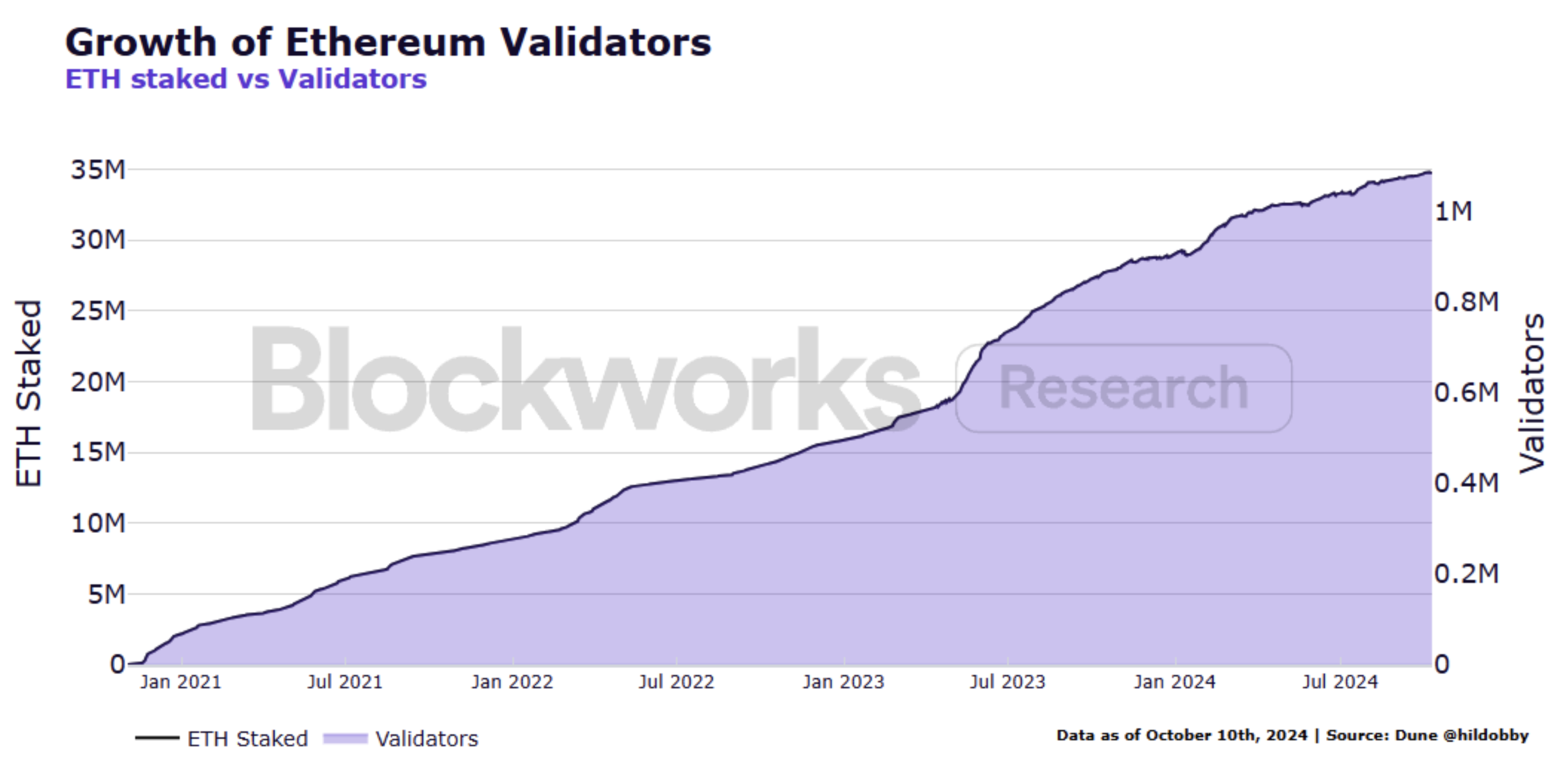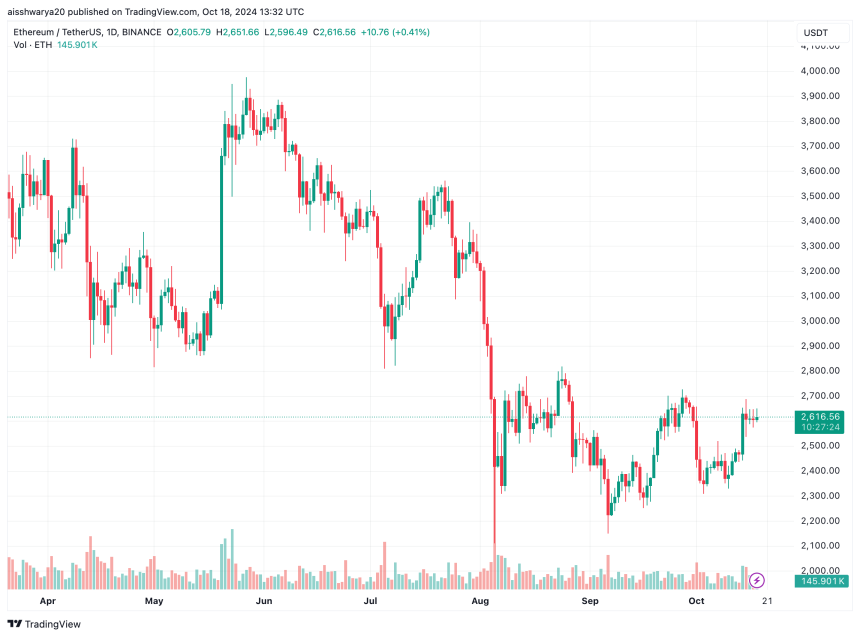Nearly 70% of institutional investors in Ethereum (ETH) are engaging in ETH staking, with 60.6% opting for third-party staking platforms.
Overview of the Ethereum Staking Landscape
A report from Blockworks Research indicates that 69.2% of institutional investors holding Ethereum are involved in staking the platform’s native ETH token. Among these, 78.8% are investment firms and asset managers.
Related Reading
Interestingly, just over one in five institutional investors – or 22.6% of the respondents – reported that ETH or an ETH-based liquid staking token (LST) represents more than 60% of their overall portfolio allocation.
The report highlights a dramatic shift in the Ethereum staking ecosystem since the network’s transition from a proof-of-work (PoW) to a proof-of-stake (PoS) consensus mechanism during the Merge upgrade.
Currently, there are approximately 1.1 million on-chain validators staking a total of 34.8 million ETH on the network. After the Merge, Ethereum network participants were able to withdraw their ETH only following the Shapella upgrade in April 2023.

Following the initial phase of ETH withdrawals, the network has experienced consistent inflows, demonstrating a solid demand for ETH staking. Currently, 28.9% of the total ETH supply is staked, making it the network with the highest dollar value of staked assets, estimated at over $115 billion.
It is noteworthy that the annualized yield from ETH staking is around 3%. As more ETH is staked, the yield decreases correspondingly. Nevertheless, network validators also have the opportunity to earn additional ETH through priority transaction fees during periods of elevated network activity.
Third-Party Staking Dominates Solo Staking
Individuals can participate in ETH staking as either solo stakers or by delegating their ETH to a third-party staking platform. While solo staking allows the staker full control over their ETH, it requires a substantial entry of at least 32 ETH – which is valued at over $83,000 at the current market price of $2,616.
In contrast, holders can stake with a minimum of 0.1 ETH through third-party stakers but must relinquish some degree of control over their assets. Recently, Ethereum co-founder Vitalik Buterin emphasized the importance of lowering entry requirements for ETH solo stakers to promote greater network decentralization.
Currently, approximately 18.7% of stakers are classified as solo stakers. However, the trend indicates that solo staking is declining in popularity due to the high entry barriers and capital inefficiency. The report clarifies:
Once committed to staking, ETH is no longer available for other financial activities throughout the DeFi ecosystem. This restricts the ability to provide liquidity to various DeFi primitives or to use ETH as collateral for loans. This results in an opportunity cost for solo stakers, who must also optimize their risk-adjusted yield potential by considering the variable network reward rates of staked ETH.
Consequently, third-party staking solutions are gaining traction among ETH stakers. However, these platforms – primarily operated by centralized exchanges and liquid staking protocols – raise concerns surrounding network centralization.
Nearly 48.6% of ETH stakers utilizing third-party staking platforms are employing just one integrated platform like Coinbase, Binance, Kiln, and others.
The report identifies several key factors driving institutional investors toward third-party platforms, including the reputation of the platform, supported networks, pricing, ease of onboarding, competitive costs, and platform expertise.
Related Reading
Despite the evolving Ethereum staking ecosystem, this growth has yet to reflect positively on ETH’s price. ETH has considerably underperformed compared to BTC over an extended period, only recently gaining momentum following the US Federal Reserve’s (Fed) announcement to cut interest rates.
Nonetheless, several crypto research firms remain hopeful about ETH’s potential resurgence against BTC later this year. At the time of publication, ETH is trading at $2,616, reflecting a 0.8% increase in the past 24 hours.

Featured image from Unsplash, Charts from Blockworks Research and Tradingview.com








